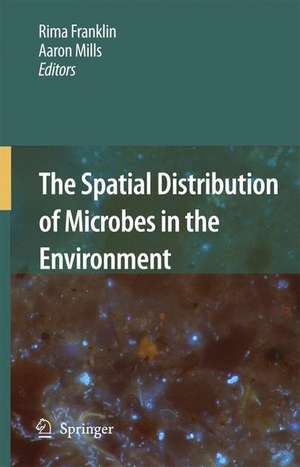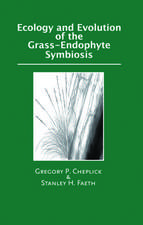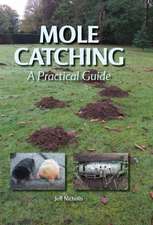The Spatial Distribution of Microbes in the Environment
Editat de Rima Franklin, Aaron Millsen Limba Engleză Hardback – 26 iul 2007
| Toate formatele și edițiile | Preț | Express |
|---|---|---|
| Paperback (1) | 946.87 lei 6-8 săpt. | |
| SPRINGER NETHERLANDS – 19 oct 2010 | 946.87 lei 6-8 săpt. | |
| Hardback (1) | 954.14 lei 6-8 săpt. | |
| SPRINGER NETHERLANDS – 26 iul 2007 | 954.14 lei 6-8 săpt. |
Preț: 954.14 lei
Preț vechi: 1163.58 lei
-18% Nou
Puncte Express: 1431
Preț estimativ în valută:
182.58€ • 191.50$ • 151.99£
182.58€ • 191.50$ • 151.99£
Carte tipărită la comandă
Livrare economică 01-15 aprilie
Preluare comenzi: 021 569.72.76
Specificații
ISBN-13: 9781402062155
ISBN-10: 140206215X
Pagini: 345
Ilustrații: XI, 333 p.
Dimensiuni: 155 x 235 x 20 mm
Greutate: 0.69 kg
Ediția:2007
Editura: SPRINGER NETHERLANDS
Colecția Springer
Locul publicării:Dordrecht, Netherlands
ISBN-10: 140206215X
Pagini: 345
Ilustrații: XI, 333 p.
Dimensiuni: 155 x 235 x 20 mm
Greutate: 0.69 kg
Ediția:2007
Editura: SPRINGER NETHERLANDS
Colecția Springer
Locul publicării:Dordrecht, Netherlands
Public țintă
ResearchCuprins
Statistical Analysis Of Spatial Structure In Microbial Communities.- Bacterial Interactions At The Microscale – Linking Habitat To Function In Soil.- Spatial Distribution Of Bacteria At The Microscale In Soil.- Analysis Of Spatial Patterns Of Rhizoplane Colonization.- Microbial Distributions And Their Potential Controlling Factors In Terrestrial Subsurface Environments.- Spatial Organisation Of Soil Fungi.- Spatial Heterogeneity Of Planktonic Microorganisms In Aquatic Systems.- The Interrelationship Between The Spatial Distribution Of Microorganisms And Vegetation In Forest Soils.
Textul de pe ultima copertă
Microbes are very small and, as individuals, are capable of influencing a portion of the environment only slightly larger than their own body size, i.e., a few microns. However, their impact on the landscape is enormous, and ecosystem processes such as organic matter decomposition, denitrification, and metal oxidation/reduction are measured on scales of meters to kilometers. This volume highlights recent advances that have contributed to our understanding of spatial patterns and scale issues in microbial ecology, and brings together research conducted at a range of spatial scales (from µm to km) and in a variety of different types of environments. These topics are addressed in a quantitative manner, and a primer on statistical methods is included to aid the unfamiliar reader. In soil ecosystems, both bacteria and fungi are discussed, and the spatial patterns are interpreted in an ecological context that considers issues such as nutrient availability, vegetation distribution and growth patterns, and microbial colonization. In aquatic systems, focus is on the distribution of planktonic forms including phytoplankton and microzooplankton. The reader should gain insight on how to integrate information across spatial scales, which is necessary in order to understand and predict how these tiny organisms can have such a profound effect on landscape and ecosystem-level processes.
Caracteristici
Attempts to address issues of scale of microbes juxtaposed with the footprint of their activities on the landscape Includes discussion of fungi in soils and planktonic microorganisms in water in an attempt to reconcile differences in scale of those organisms to their activity footprint Provides a primer on quantitative methods used to evaluate scale issues and distributions in an effort to allow readers to follow arguments presented in the various chapters, as well as to understand many presentations in the primary literature How microbial community spatial patterns correlate with environmental heterogeneity Considers a diversity of habitats (rhizosphere, surface soils, terrestrial subsurface, and aquatic environments) and a variety of spatial scales (µm to km)















